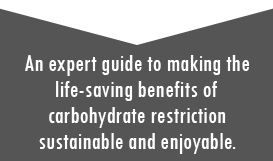14 May 2013
The Sad Saga of Saturated Fat
Here’s a fascinating paradox. Over the last 4 decades, nutrition policy makers have increasingly exhorted us to eat less saturated fat. As a result of this unremitting message, the general population believes this single nutrient, if not overtly toxic, will at least cause wide-spread bodily damage. Additionally, foods that naturally contain saturated fat (e.g., beef, pork, dairy, eggs, and tropical oils) have been branded ‘unhealthy’. The paradox here is that as the drum-beat against saturated fats has increased, the actual science supporting this message has fallen into shambles. So here’s our question: should we all just be good citizens and swallow this advice, even if the science behind it no longer pasts muster?
Two generations of researchers have tried to prove that eating saturated fat causes heart disease. Rather than growing stronger, as would be the case if this hypothesis were rock-solid, increasingly the scientific data is painting a picture more akin to ‘low fat Swiss cheese’ (i.e., not much there besides the holes). Take, for example, multiple recent meta-analyses of large populations followed carefully for decades, examining what they eat and what they die of [1-4] All show no consistent association between dietary saturated fat intake and risk for heart disease or death from all causes. In fact some of these studies show just the opposite – an inverse association of dietary saturated fat intakes and atherosclerosis or stroke. Interestingly, they also suggest that one’s risk for a coronary event increases when dietary saturated fat is reduced and replaced by carbohydrate.
Here’s the problem as we see it. By continuing to provoke fear about the harmful effects of saturated fat, the likely response is that people will seek out foods low in fat and higher in carbohydrate. And in reality, that’s exactly what appears to be happening. According to a government-funded survey [5], Americans have decreased their consumption of saturated fat and replaced those calories with an even greater amount of carbohydrate. This dietary flip-flop of trading away saturated fat and replacing it with carbohydrate has occurred in the same time interval as rates of obesity and diabetes have rocketed skywards. This might be coincidence, or more likely it’s an extremely unfortunate unintended consequence.
Read More
01 May 2013
You Are Not What You Eat
In a contest among phrases that are both commonly spoken but overtly flawed, “you are what you eat” is a sure winner. In our combined 6 decades of experience in academic nutrition, incessantly we’ve heard this sound-bite used to deter people from eating foods containing fats and cholesterol. And perhaps most interestingly, it seems no amount of logic can lead its users into the light.
With just a little bit of thought, perhaps you can perceive our problem with this. Let’s take the example of a highly trained male distance runner who eats a 60% carbohydrate, 20% fat diet. If he is what he ate, his body should contain more carbohydrate than fat. If our runner weighs 145 pounds and has about 10% body fat, however, his body energy stores translate into 50,000 kilocalories (kcal) of fat and perhaps 2000 kcal of carbohydrate (glucose and glycogen). Putting it another way, if you are what you eat, how does eating three times more carb than fat translate into having1/25th as much carbohydrate as fat in the body’s fuel reserves? The answer, of course, is that on a high carbohydrate diet, the high blood insulin levels it induces promote carbohydrate oxidation – carbohydrates are rapidly oxidized to carbon dioxide and water (at least in an insulin-sensitive athlete).
Now let’s go to the other end of the dietary spectrum – to the aboriginal diet of the Arctic Inuit or the nomadic Native Americans of the Great Plains. If we give our hypothetical runner a diet that is 5% carbohydrate and 75% fat (neither of these cultures over-indulged in protein) and allow him/her to eat to satiety for a month, what becomes of body fuel stores? Surprisingly, total body glycogen reserves are only reduced by half to about 1000 kcal, whereas body fat content will typically either stay the same or decline somewhat (i.e., 40,000 – 50,000 kcal).


 NEWLINEINFO CORP
NEWLINEINFO CORP